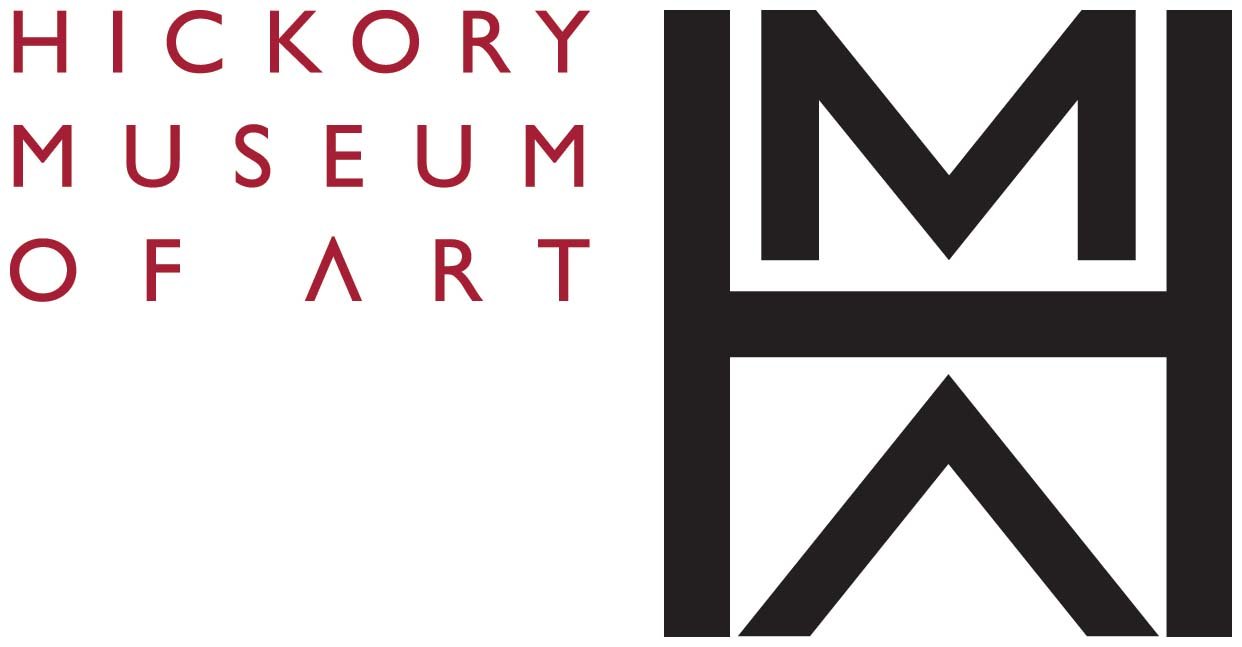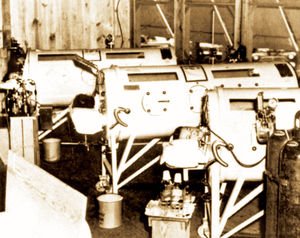The “Miracle of Hickory”: the 1944 Polio Hospital
"In June 1944, the citizens of Hickory built a hospital in 54 hours to save their children from the worst polio outbreak that had ever hit the United States. Looking back now, even knowing the results – 13 wards erected, doctors and nurses flocking in by the dozens, hundreds of patients treated and released, with only 12 deaths, one of the country’s lowest-ever rates for polio – the enormity of the undertaking still bewilders." (Charles D. Dixon, Hickory NC)
The horizontal stone building in the middle was the only original building in the camp. The four roofed tents on the right was the first addition, with the rest added over subsequent weeks and months. The large buildings on the left held wards for as many as 50 children each. The original stone building still stands in Hickory's Jaycee Park.
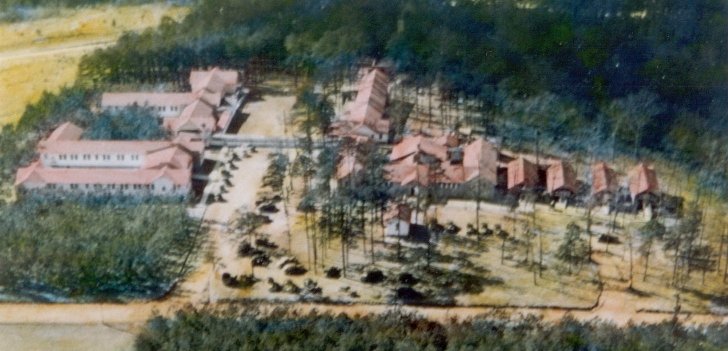
As early as 1916, large outbreaks of poliomyelitis periodically swept through American cities and towns, crippling and killing thousands. Most years saw smaller summer outbreaks that would pretty much stop with the cold weather. The victims were mainly children, but not always.
Polio is an infectious viral disease that enters through the mouth or nose, then travels to the spinal cord. There it attacks nerves that control muscle activity, causing temporary or permanent paralysis. Usually polio affects leg, arm, stomach and back muscles. But if it paralyzes chest muscles needed for breathing, it can be fatal, though iron lungs helped. There was no cure for polio, but most people did recover with at least partial return of mobility.
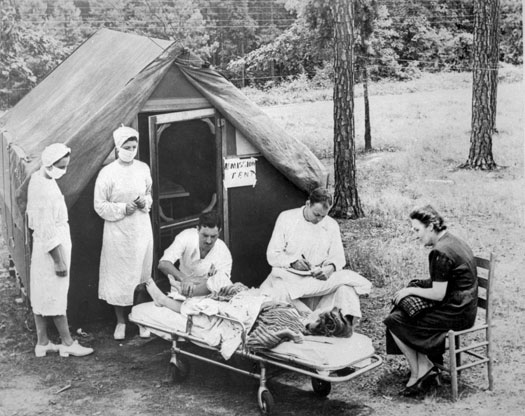
In June 1944, polio swept across North Carolina’s western Piedmont region, centering around Catawba County. At the time, it was thought that flies were transmitting the disease; but later it was determined that the virus was spread by the myriad of small streams throughout the region into which outhouses often emptied traces of feces holding the virus from already infected people. These streams fed people’s wells, and children often played in the streams throughout the summer.
Hickory responded by turning a local camp into an extensive emergency hospital almost overnight. The first patients were admitted within 54 hours, the feat that became known as “The Miracle of Hickory.” Patients from all over North Carolina and some neighboring states came to the Hickory hospital. On July 31, 1944, Life magazine featured four pages of photographs from the wards. (The Life Magazine photographs were not the ones in this post, which are from local sources.)
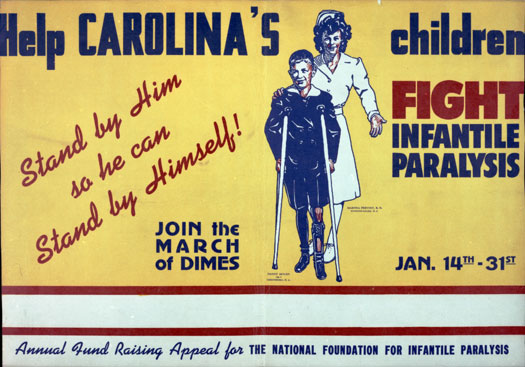
The concluding exhibit for HMA's 70th Anniversary celebrations in 2014 included a section focused on "The Miracle of Hickory."
“In 1946 the [National Foundation's fund raising] March of Dimes introduced its first ‘official’ polio poster child. The idea was controversial…. How did one portray a polio victim? As cheerful and optimistic or frightened and sad? … Guided by the ‘Miracle of Hickory’ campaign, the foundation chose option No.1….” (From David Oshinsky's 2005 "Polio: an American Story.)
The Hickory Emergency Infantile Paralysis Hospital was in operation for nine months, until March 5, 1945, giving other locations time to construct more permanent facilities. During its existence, the Hickory hospital evaluated 663 patients, of whom 528 were diagnosed with polio and 454 were admitted. It is notable that in a time of closely observed racial segregation, 55 African American children were evaluated and some of them were admitted to unsegregated wards.
Although the two diseases differ in fundamental ways, it might seem a short step to equate this epidemic with what happened with the West African Ebola virus epidemic (2013-2016), including the transmission by bodily fluids and the urgency of early treatment. However, for managing the Hickory polio epidemic there was at least one significant difference: those who cared for the polio patients rarely became sick themselves. One reason for that was probably that those adults had acquired at least partial immunity as children, from having grown up in less carefully hygienic times coupled with being exposed to less severe earlier outbreaks.
The introduction of polio vaccines (beginning with Salk's in 1955) and their development over the years has largely eradicated world-wide the kinds of polio epidemics that touched Hickory in 1944.
On Feb. 1, 2015, Melinda Herzog, who for nine years had been the Executive Director of the Catawba County Historical Association, gave an illustrated one hour 16 minute talk at HMA about The Miracle of Hickory.
The history of the polio epidemic in Hickory is generously documented on the Internet, and can be retrieved via a Google search under "hickory nc polio epidemic." Hickory native Marvin Elliott's 2007 typescript "Mass Media and the Miracle of Hickory" is particularly thorough, and includes follow-up reflections and bibliographic references.
First published April 7, 2015
Post by Karin Borei, HMA Project Coordinator, writer and editor as needed, and HMA blogger since our blog's inception in March 2015.
